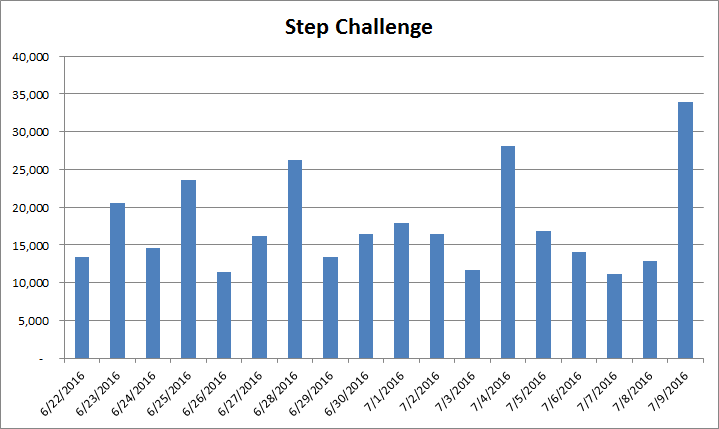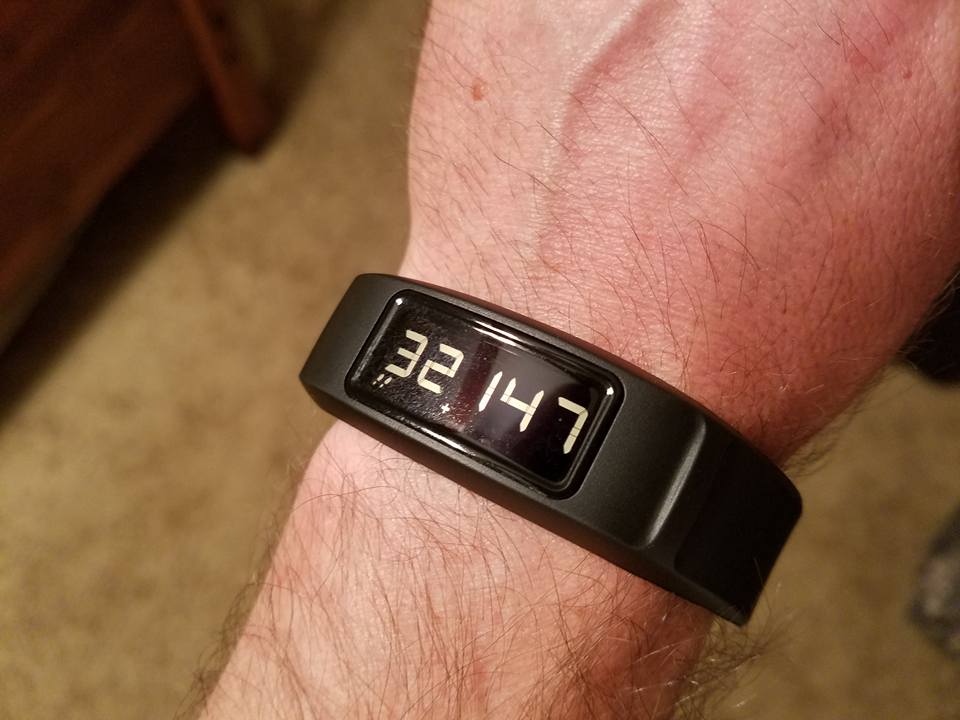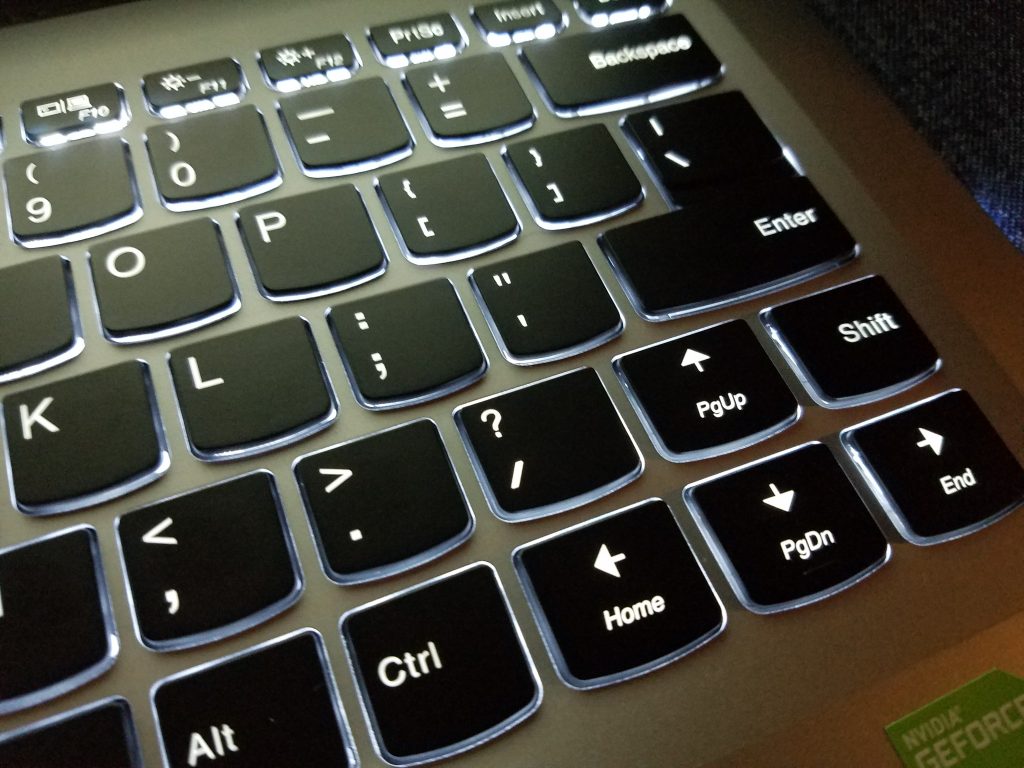I’ve always enjoyed running, though I haven’t always run. Lately, though, I have.
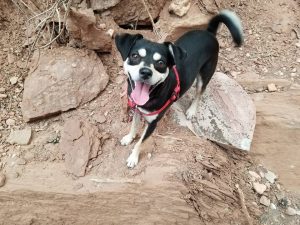 Early this year, we adopted Roxy from a shelter. Roxy is, we think, mostly Manchester terrier. We discovered pretty quickly that she really liked to run. I took this as an sign that I should probably get my running legs back into shape. Roxy isn’t a big dog, but she has long legs and (apparently) infinite stamina.
Early this year, we adopted Roxy from a shelter. Roxy is, we think, mostly Manchester terrier. We discovered pretty quickly that she really liked to run. I took this as an sign that I should probably get my running legs back into shape. Roxy isn’t a big dog, but she has long legs and (apparently) infinite stamina.
A good friend of mine, Doran, has been doing half marathons for a while. I’ve been watching him from afar as he’s trained for and completed a bunch of them. In February I made the decision that I would use my time running with Roxy to prepare to run my very first half. Roxy and I had some interesting times along the way.
Initially, I was running every single day, literally rain or shine. When this started to take a toll on my body, I went to see a physical therapist. He assured me that the constant aches and pains in my hip and legs were muscular and not in my actual joints. He planned out a daily regimen of stretching for me, and recommended that I use a foam roller on my leg muscles to help condition them. Also, he encouraged me to give myself two “no run” days a week. His advice was instrumental in allowing me to keep training.
My plan was pretty straightforward. Five runs a week, with one of them being a long run (nine or ten miles). Roxy and I both prefer to run on the snake–infested trails north of our home if the weather is good and I can get out before dark. When that wasn’t possible, we ran on the streets of my neighborhood. Here’s a summary of how my training went:
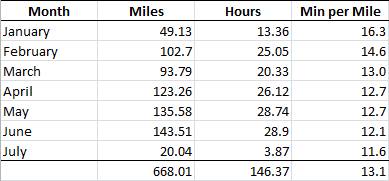
Doran and I registered for the first race that made sense: The Bryce Canyon Half. It begins at Ruby’s Inn on Highway 63 (elevation 7,652 ft.), turning onto National Scenic Byway 12 and descending through Bryce Canyon National Park, passing through Tropic and ending in Cannonville (elevation 5,800 ft.) My original goal was just to finish the race, with no expectation regarding my time. But as the race approached, I decided I wanted to try to finish in under two hours, if possible.
The morning of the race I was feeling apprehensive. My longest training run had been 10.5 miles, though that had been a trail run with lots of uphills. Doran and I had stayed overnight in Panguitch, and didn’t get much sleep that night (though to be honest, I got a lot more than he did). We got up at 4:30 to catch the bus to the staging area. The sky was just beginning to lighten a bit as we took off our jackets and got ready to run.
Here are two things I learned that I hadn’t known before:
- Your race bib tracks your start and finish. I’d been worried about whether I should try to get up to the front to start closer to the head of the pack, but I discovered that wasn’t even necessary. The bibs they gave us had an RFID chip in them that recprded the exact time we crossed the starting and finish lines. Knowing that now, it would probably make sense to actually begin toward the back, to let the pack thin out before actually beginning my own race.
- “Pace runners” are a thing. As we were lining up, I noticed these people holding sticks with signs on them that said “1:55,” “2:00,” “2:05” and so on. Apparently this is pretty common. These people run the race to strict times that allow other runners to pace against them, so they can finish in the time on the signs. Pretty cool idea, though obviously the staggered starts caused by the RFID chips make that a bit less than 100-percent accurate.
The gun went off and we all started running.
The first two miles were flat as we chugged down Highway 63 and onto the 12. Right at about the two-mile mark, the road went over a little hump and dove down at a pretty steep grade. I was feeling great, not even winded, but began to feel the pull of gravity. Not liking the pace dictated by the downhill course, I kept switching between leaning back and just giving in to it. Miles three and four were the steepest, and then the grade got a little easier to manage. A lot of people blew by me as I caught up to the 1:55 pace runner. I had my music cranking and just kept putting one foot in front of the other, enjoying the scenery.
At the end of mile four I dosed my first gel pack. This is something I’d read about, and experimented a little with in my training runs. They’re basically an ounce of gooey sweet stuff that you squeeze into your mouth, providing calories and electrolytes that get into your system quick. I carried a water belt pack (though the race had plenty of water/Gatorade stations) because I wanted to be able to hydrate when I needed it. Washed down the sugar. Still feeling great.
At the six-and-a-half point I shouted out, “Halfway there!” I don’t know what kind of reaction I expected, but nobody responded. Too busy running, I guess.
Somewhere along mile eight I began feeling the burn. I’d been sneaker-stalking Miss 1:55, but she ducked out at some point, probably because she was ahead of schedule. I found myself gaining on the 1:50 pace runner, and then I lost her. I also started seeing a few runners limping and stretching on the side of the road—either they had cramped up or they were in some kind of distress. Luckily, I didn’t feel any of that … just the burning legs. We hit a few short uphill sections and I shortened my stride but upped my pace. Passed several people going up, which felt pretty good. A lot of my training trails are uphill.
Something happened around mile ten that bothered me. I thought I’d been paying attention to the mile-marker signs, and the voice on my phone kept on counting off the half-miles. Somehow, though, I got it into my head that I’d passed the ten-mile mark, so I was expecting eleven to come pretty quickly. Just two miles after that. Piece of cake. Then, when I approached the next orange sign, it said 10 and not 11. That kind of set me back. Three more miles … not two. My head must have been getting foggy. We hit another up-grade and I concentrated on putting one foot in front of the other. Again and again. Again and again.
Once I actually passed mile eleven, the last two miles were sheer willpower. Another rise, then a flat section, then eventually the long, gentle slope into Cannonville. I saw a crudely written marriage proposal on a flattened cardboard box. (“Will you marrie me?“) I saw some other signs, and passed a family parked on the side of the road holding a banner. I can’t remember who they were rooting for. Too busy running.
I tried to pick up my pace as we made the final turn leading toward the finish, but honestly, I think I simply kept going. I had no idea where I was in term of time, because I wasn’t paying attention. Didn’t want to fumble for my phone. Just kept running. Turned into the parking lot and crossed the pad. Someone put a medal around my neck. My legs were burning pretty good and I walked around on jelly knees. It took a moment or two to realize my phone was still ticking away. I took it out and stopped the clock. The time said 1:52:29. I couldn’t believe it. The number seemed impossible.
I made my way back to the corner to wait for Doran. As I stood there, a teenaged girl (probably around 16 or so, wearing her school’s cross country team shirt) looked at me and said, “Oh, it’s you. I was pacing against you.” Wow—I’m three times her age. That felt good.
Doran came in after a little while, and we grabbed our refreshments. The chocolate milk was already gone, but they had bananas and ice cream sandwiches. Yum.
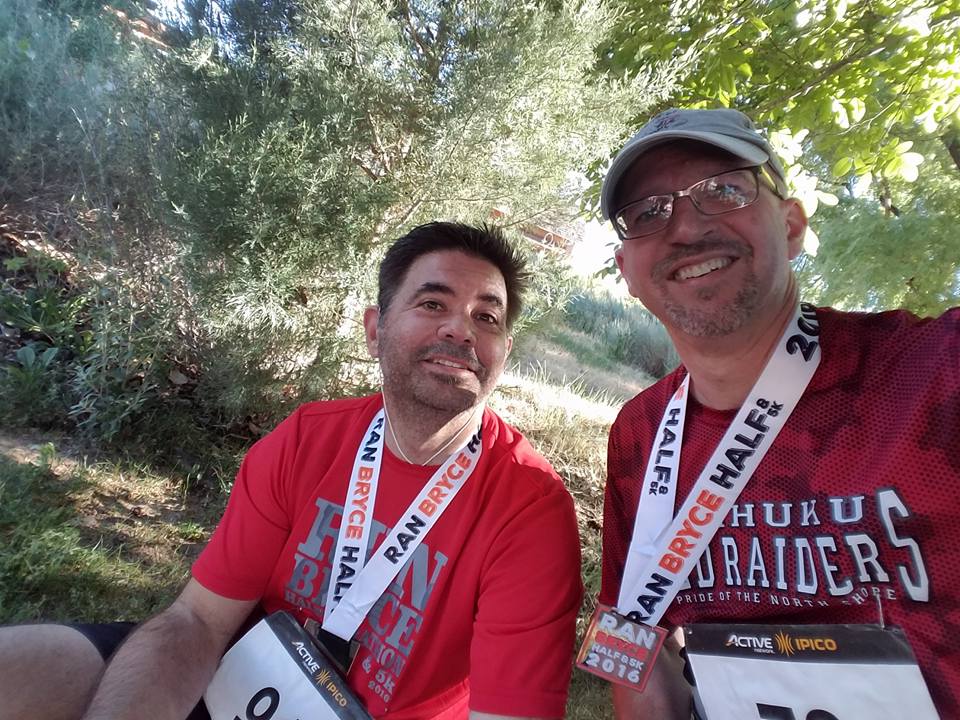
Just before we left, I walked over and checked the posted times. I turned out that I had done even better than I thought. My final “chip time” was 1:50:05. That means I averaged 8.4-minute miles over 13 miles. Unbelievable. I came in 17th in the “male, 45-49” category, and 253rd overall. I still don’t know how I did that.
You only ever get one first half-marathon, and this one was a great experience. Now that I know I can do it, I’m going to begin experimenting with different training regimens, different courses, different music, different paces—anything I can do to maximize my results. Yesterday I registered for my second half … coming up in three weeks. I’m planning on a third race in September and another one in November. After I have four halves under my belt, I just might start thinking about considering the possibility of maybe deciding whether I might want to attempt a full marathon.
… Maybe.
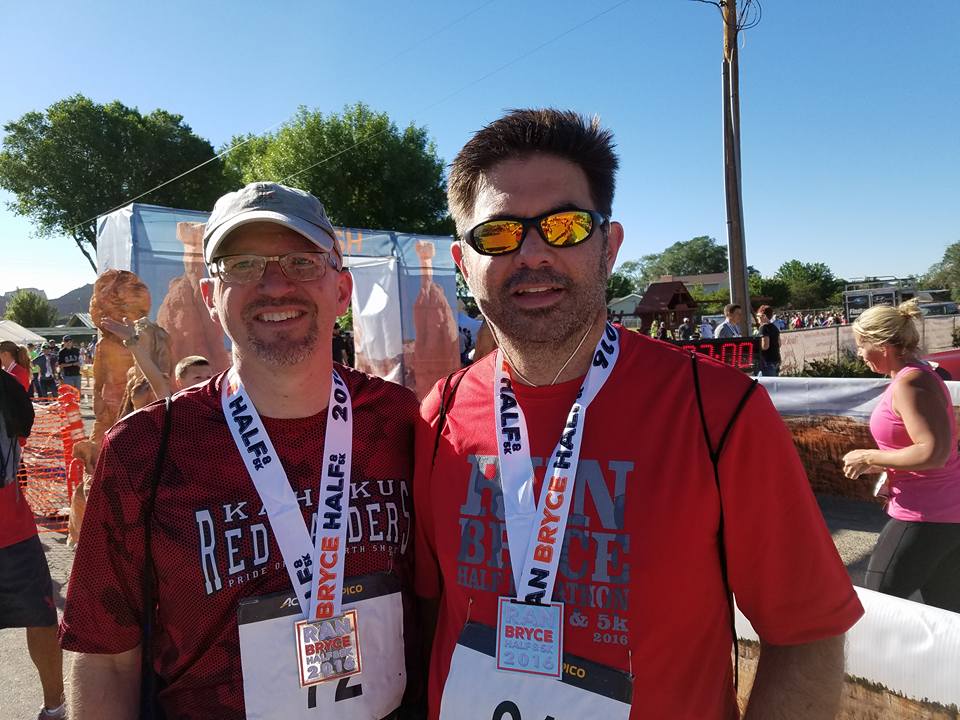
Incidentally, this whole run-up to the half also coincided with a “step challenge” going on with my wellness program at work. I got my fitness tracker a week into the challenge, at which point I was #3 on my team (based solely on the runs I was tracking via MapMyRun). The person on my team in first place was averaging in the neighborhood of 9,500 steps per day. With all my training—my short and long runs, and the other stuff I’ve been doing—I ended up with an average of 17,699 steps per day.
At the end of race day (last Saturday), I had 33,899 total steps. (That happened after I took the photo below.)
